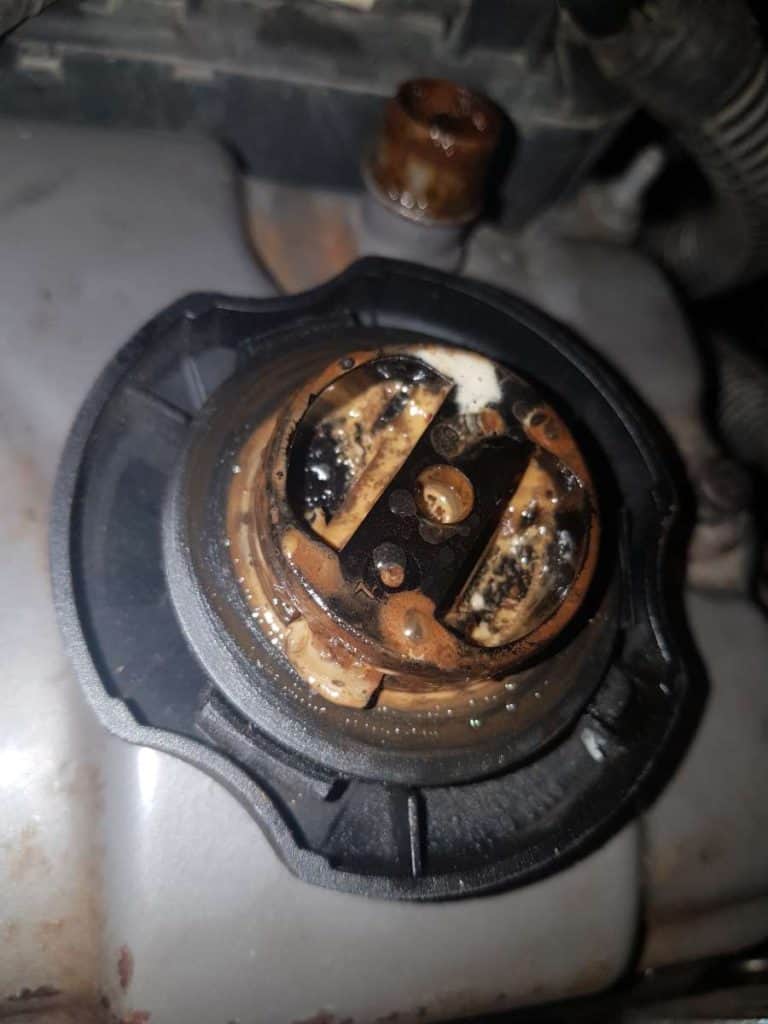With turbochargers now coming in practically every new car these days, more and more people are asking the question, what should you not do with a turbo engine, with very few clear hard facts available I decided to put together this article covering the do’s and don’ts of owning a vehicle with a turbo engine.
Don’t Run Your Engine At High RPM Immediately After Starting The Car
One of the most important things you should not do with a turbo engine or any engine is run the engine hard under load before it has reached the optimum working temperature.
This means that you should always let the engine warm up to its normal working temperature before you begin to run the engine at high RPM or fast acceleration.

The reason for this is that the turbocharger needs lubrication to keep everything turning and working freely. The turbo gets its lubrication from the engine oil, via an oil feed which is piped directly into the oil filter housing.
The problem with oil is that when it is cold, it turns thick, and the viscosity of the oil increases. This can lead to several problems, the main problem being, it is more difficult for the oil pump to circulate a sufficient amount of oil throughout the engine and turbo.
The reason you should not run a turbo engine fast when it is cold is that the internal shaft of a turbocharger spins at a speed of 280,00 RPM at full boost, if the turbo fails to get the correct levels of lubrication it needs, the moving parts of the turbocharger will wear away or leave scoring on the surface causing premature failure of the parts and/or turbo.
Once the surface of the shaft or any other parts becomes scored or damaged they will then damage other parts such as bearings or oil seals, resulting in leaks, noises, and complete failure.
To find out exactly how to warm up a turbo engine and yourself money you should check out this article.
Don’t Lug Your Engine Trying To Save Fuel (You wont)
Lugging an engine is when you drive the vehicle in a high gear and a very low RPM, effectively driving the vehicle at a faster speed than the engine is going. People do this in an attempt to save fuel because they think the lower the RPM the less fuel they are using, but they are wrong.
What lugging actually does is put unnecessary pressure on your engine, clutch, and flywheel causing the engine temperature to increase and possibly resulting in engine knock or the engine skipping timing due to a misfire under load.
Lugging is also the cause of many catalytic converter and DPF failures due to there not being enough air in the cylinders to burn the fuel, resulting in fuel being left unburned in the combustion chamber and causing the DPF to become blocked.
You should not do this with a turbo engine because for a turbo to run efficiently it needs enough exhaust pressure to spool up and create boost pressure, this then reduces the workload placed on the engine, therefore reducing fuel consumption while still driving the vehicle the correct way.
Instead of lugging your engine in a last-ditch attempt to cut down on fuel costs, you should take a look at this article covering some basics on how to make your car more fuel efficient.
Don’t Use Cheap or Contaminated Engine Oil
A turbo needs one thing to survive, and that’s oil. A basic thing you should not do with a turbo engine is run it with old, dirty, contaminated, or cheap oil. That’s why it is extra important to keep a turbocharged engine serviced regularly with the manufacturer’s recommended oil type.
The tolerances turbocharger are engineered to are within thousands of an inch, with noting separating these rotating parts only a thin layer of oil, and as I mentioned above, these moving parts are rotating at a speed of 280,00 RPM.
Once an engine goes over its service period eventually the oil filter becomes dirty and the engine oil becomes, thin and dirty due to any old burnt oil or small debris which may be sitting in your oil pan and filter.

This dirt then gets picked up by the circulating engine oil and gets pulled into the turbo and other oil journals around the engine. This results in the tiny oil journals in the engine and turbo becoming blocked and reducing oil flow to that area, which then leads to overheating and eventually failure of the turbo.
By keeping your engine serviced with clean oil and fresh filters you are ensuring the turbo is getting a sufficient amount of oil and your engine remains healthy.
The simplest and most effective way to be sure you are not guilty of killing your turbo is by keeping your engine serviced on time every time with good quality oil.
So if you’ve just bought the car and are unsure when it last had an oil change, just get it changed, and to be sure you don’t run into any unnecessary problems in the future, you should check out this article on how to know if your turbo is gone, its full of useful maintenance techniques and tell-tale signs that may well save your turbo.
Never Run Your Engine Without The Air Filter Fitted To The Turbo
The most common thing that kills turbos on tuner turbo engines is removing the air filter from the turbo. This allows dirt and debris to enter the compressor housing of the turbocharger and cause catastrophic damage to the compressor wheel, due to collision with a foreign object at anything up to 280,00 RPM.
A turbo needs air to produce more power, this is the reason people remove the air filter, to give the turbo unrestricted air flow meaning it would produce more power with faster acceleration. The problem with that is that it also gives foreign objects such as dirt, dust, or birds unrestricted access to the turbo which is definitely not what you should do with a turbo engine, or any engine.
A turbo needs an air filter to catch any objects which may be in the air and stop them from entering the turbocharger, causing damage. If you have ever considered removing the air filter from your turbo, don’t do it.
There is plenty of good alternative air filter which reduce airflow to a very minimum while still protecting your turbo.
To get a better understanding of how a turbo works and what exactly it does you should check out this article, because the better you understand it, the more you know how to use it.
Don’t Run Your Engine on Cheap Low Octane Fuel
A very important thing you should never do with a turbo engine is use cheap low octane fuel. Turbocharged engines run at a lower compression ratio than naturally aspirated engines, this means that they need to compensate with slightly higher octane fuel to give the engine the extra bang it needs for combustion to occur smoothly.
Unfortunately, the highest octane fuel available in most of the Western world is 94 in the US and 98 in the EU, but even though the EU seems higher it is equal to the octane 94 in the US due to a different measuring scheme.
Comparing the EU and the US to Japan which has octane 100 in most filling stations we are definitely far behind when it comes to fuel performance and it proves we need to be taking advantage of the highest octane fuel available to keep our turbo and engine happy and healthy.
Don’t Switch Off Your Engine Immediately After Stopping
A common reason for turbo failure is due to people not using the correct start-up and shut-down procedure for a turbo engine.
After driving a turbo car, before switching the engine off after a long or hard drive you should always allow the engine to run idle for between 30-60 seconds to give the engine oil time to circulate and cool down before stopping the engine.
After a hard drive the turbo housing gets as hot as a pan, then when you shut the engine straight off the oil stops circulating and just sits in the turbo cooking to the surface resulting in coking. Coking is when the oil becomes burnt to the surface, leaving it rough and stained.
Eventually, the surface becomes so coked that it causes resistance and friction to the moving parts which result in overheating and premature failure of the turbocharger.
By letting the engine idle, you are allowing the oil to continue to circulate around the engine and turbo, this will help the oil to pull the heat out of the turbocharger and let it dissipate around the engine before shutting the engine off.
Never Try Cooling Down a Hot Turbo With Cold Water
As obvious as this may seem, it needs to be said because it has been done before. Never attempt to cool down a hot turbo by pouring cold water on it.
Pouring cold water on any type of red hot steel/iron will instantly cause the material to crack, warp, or shatter depending on the heat of both the water and the material.
Turbochargers are usually constructed from cast stainless steel or cast iron which is extremely brittle and sensitive to heat shock. This means that once it gets hot it needs to cool down evenly at a slow consistent rate or else it is highly prone to cracking.
The easiest way to cool down a turbo is by driving the vehicle slowly around the block, coasting where you can, the wind alone will cool the turbo right down in no time at all.
Recent Posts
Are Turbos Reliable or Do They Break Easily? [What not to do]
Since the invention of the first turbocharger in 1905, the automotive world has never been the same again, due to the immense amount of power a simple turbo can add to a combustion engine. But since...
